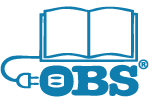BookExpo America, New York City
This is a fair where the publishing houses meet their market, the bookstores, and present the new books for the coming year. Whereas the Frankfurt and London Book Fairs highlight rights, and networking among publishers, BEA features lots of marketing glitz. Every year we see fewer independent bookstores perusing among the publishers’ stands, and a larger presence of the big chains like Barnes and Noble. These chains assume a larger and larger footprint on our industry as they expand beyond bookselling into print on demand and publishing itself, by establishing their own vanity presses and even imprints. This year featured a large number of the former, companies like iUniverse, AuthorHouse, and Amazon’sBookSurge. With one of these presses, and for an investment of under $1,000, any author can now publish his own book and get it to market at the big online bookstores, in weeks or months.
The means of production are now indeed in the hands of the masses.
June 13, 2007
American Association of University Presses
This year’s Annual Meeting in Minneapolis features a startling and inspiring presentation by Rice University Press’s new leader, Chuck Henry, detailing the phoenix-like rise of the new online-only Press. Ten years ago, the press shuttered its doors as a print operation, primarily for economic reasons all too familiar to the university press world—high paper prices, distribution problems, inefficiencies and costs of making things work using legacy software, competition with trade houses, dwindling library budgets.
The press now is creating a new intellectual platform for academicians and publishers:
“Rice University has re-launched its university press as an all-digital operation. Using the open-source e-publishing platform Connexions, Rice University Press is returning from a decade-long hiatus to explore models of peer-reviewed scholarship for the 21st century. The technology offers authors a way to use multimedia—audio files, live hyperlinks or moving images—to craft dynamic scholarly arguments, and to publish on-demand original works in fields of study that are increasingly constrained by print publishing.”
A picture is worth a thousand words, as the cliche goes. Henry’s presentation of the medieval Bayeux Tapestry, turned by Rice University Press into an online classroom, clearly demonstrates that Rice is leading online publishers to a new generation of publishing in which PDFs and copies of books may play a decidedly minor role in a vital scholarly community.
